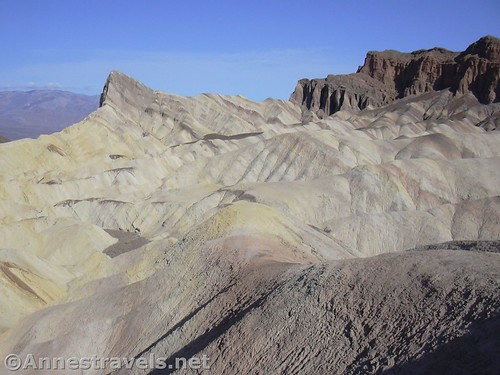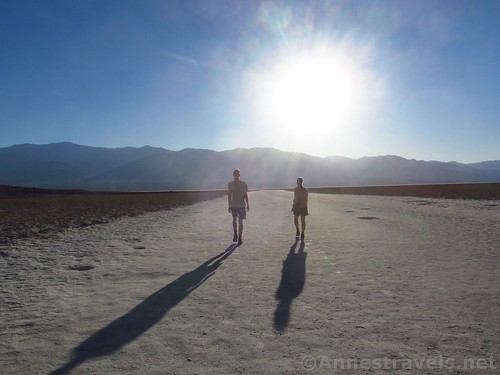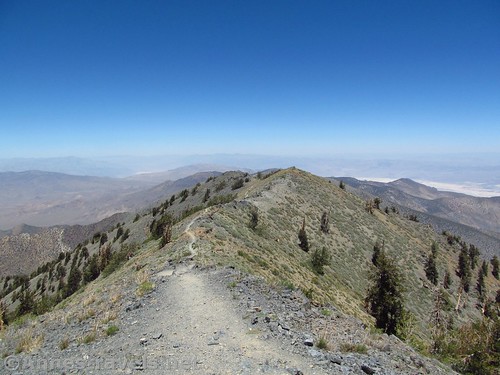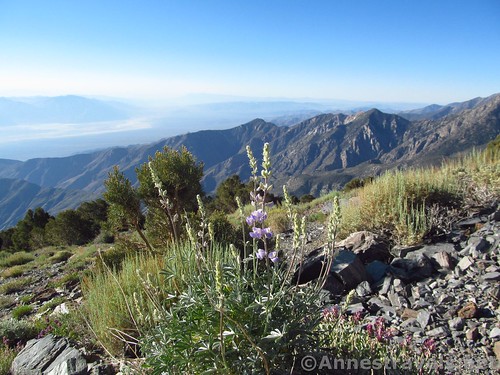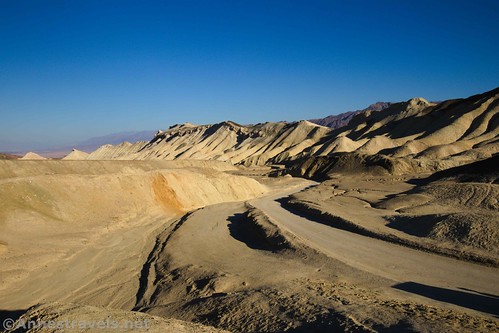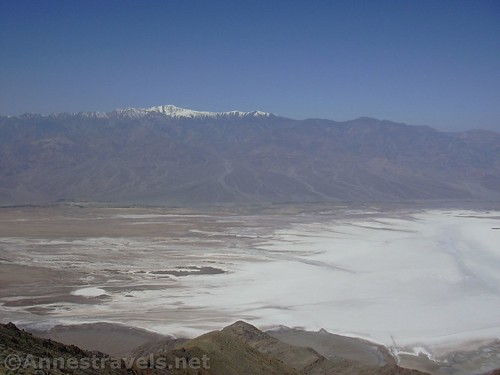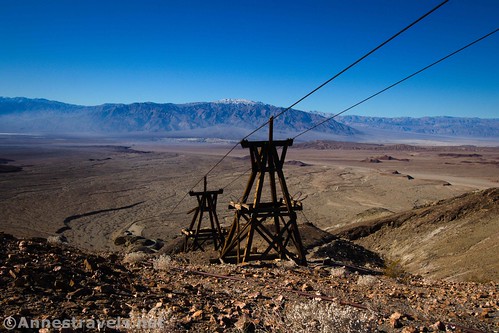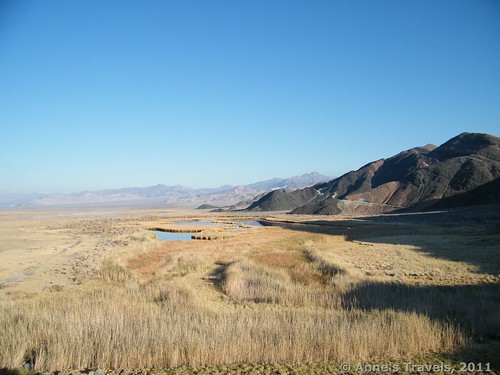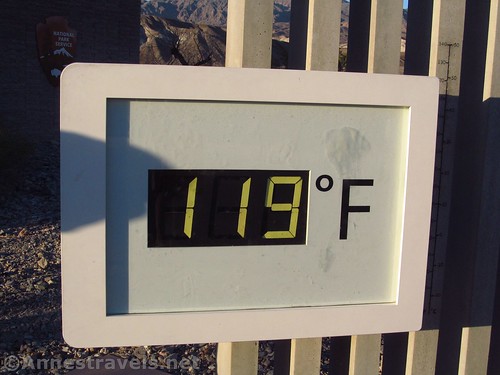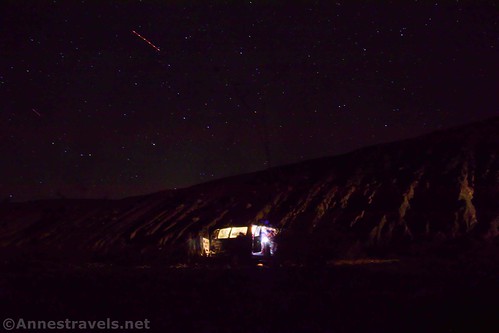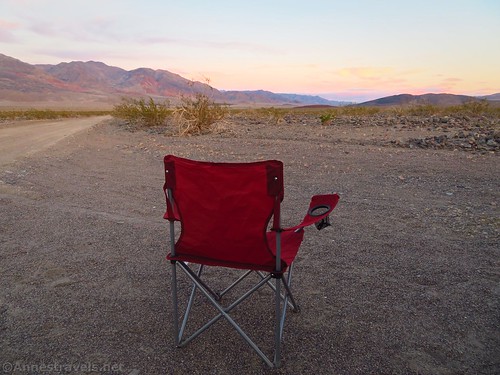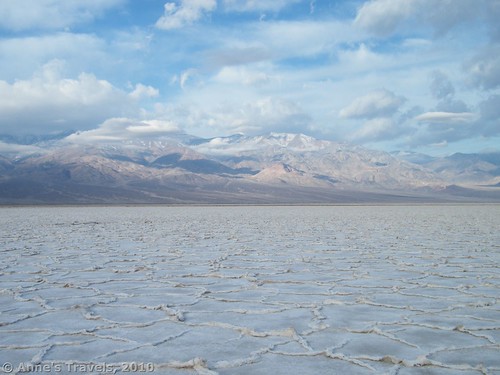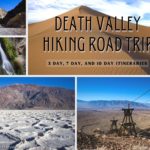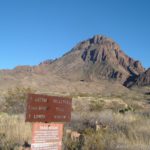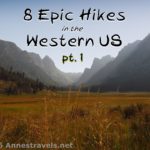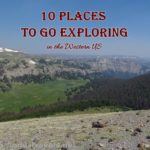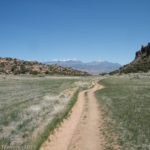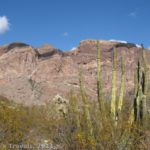
Death Valley is a land of extremes – incredibly dry desert, mountains, bristlecone forests, cacti, sand dunes, wildflowers, canyons, old mines, and waterfalls, not to mention rich history, hiking options galore, and the bragging rights of “the lowest place in North America.”
We’ve hiked trails from almost one end of the valley to the other, so I put together a list of our favorites!
Jump to
Favorite Canyons
Favorite for Bragging Rights
Favorite Scenic Drives/Viewpoints
Favorite History/Mining
Weird & Wacky Favorites
When Should You Visit Death Valley?
Fees/Permits for Visiting Death Valley
Camping & Lodging in Death Valley
Don’t forget to check out Hiking Itineraries for 3 Days, 7 Days, and 10 Days in Death Valley!
Favorite Canyons
Sidewinder Canyon blows all of the other canyons I’ve hiked in Death Valley out of the water when it comes to exploration options! There are no less than six slots to explore beyond the main canyon (which has its own slot section), not to mention plenty of pretty and interesting features along the way. Milage varies depending on your route, but you’ll likely do at least 6.4 miles.
Grotto Canyon is beautiful, exciting, and requires scrambling. It gets “most fun” rating from me. Go to Mosaic Canyon for a just as beautiful, if less scrambling required, route that’s much more family and day-hike-friendly. 1.25+ miles (Grotto) or 4-ish miles (Mosaic) RT
Fall Canyon is my favorite non-slot canyon in Death Valley. It’s simply a beautiful hike. It’s also fairly easy, though if you want to ascend into the upper canyon, you’ll be doing a Class 3/4 move. 6.8 miles out & back
The Zabriskie Point-Golden Canyon-Gower Gulch Loop is possibly one of the most popular hikes in Death Valley – and for good reason! Catch views of Manly Beacon and the surrounding badlands at sunrise, then head down the trail to great views, colorful badlands, a couple of canyons, and more. About 6.8 mile lollipop loop
Favorites for Bragging Rights
Badwater Basin is a must-stop destination for me no matter where else I’m headed in Death Valley. Knowing I’m near the lowest point in North America is such fun! Plus it’s very pretty. If you’re really feeling adventurous, you can find the semi-official low point or cross Badwater Flats. 0.25-12.9 miles out & back
Telescope Peak is a very beautiful hike. It also happens to have a whopping 11,000ft. of vertical relief from the valley floor to the top of the peak (that’s pretty similar to the vertical relief from Everest’s base camp to the top of Mt. Everest). Now that’s some bragging rights! 13.2 miles out & back. If you can’t do all that mileage in a day, try hiking Rogers Peak or Bennett Peak or take the less-snowy trail to Wildrose Peak.
Favorite Scenic Drives/Viewpoints
20 Mule Team Scenic Drive is best in the early morning or late afternoon. It’s best-known for being the setting for several Star Wars films, but to me it’s just an amazing display of colorful rocks and badlands.
Dante’s View is likely one of the most beautiful viewpoints in Death Valley – at least in the morning. It showcases the amazing vertical change between Badwater Flats (-282ft.) to Telescope Peak (11,049ft.). You can also continue up to Mount Perry if you want more views.
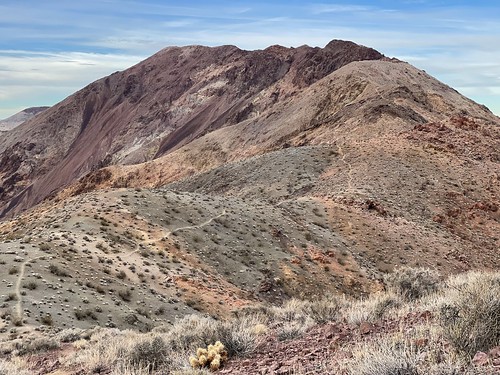
Favorites for History & Mining
The Keane Wonder Mine Trail has long been one of my favorite hikes to mines of any kind in any national park. It’s fascinating to see the old tramway, pass a couple of gold mines, and see the ruins of the equipment. Plus the views are stunning! 3.1 miles out & back
Speaking of Keane Wonder, the Keane Wonder Spring Trail to John Cyty’s Cabin was a favorite of mine on my most recent visit. It’s not actually a trail, but you also probably won’t get too lost as long as you follow the line of old pipes. 3.6 miles out & back
Weird & Wacky Favorites
Who would have thought of visiting Death Valley to see a waterfall? Yet Darwin Falls is a year-round oasis in the desert. In November, after months without rain, I still found wildflowers along the trail. 2.2 miles out & back
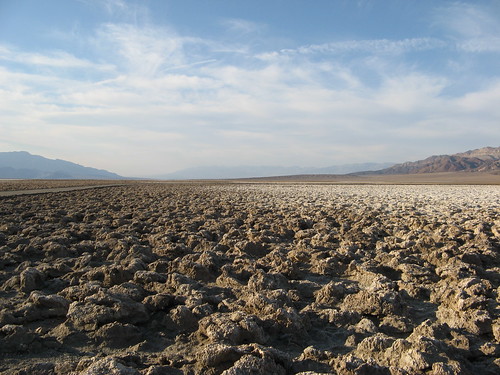
Devils Golf Course is pretty much just some interesting rock formations. If you’re looking for the epic, don’t bother. But if you want to see the extraordinary by looking closely, the crystals are a great area to explore. Milage varies but doesn’t have to be very much.
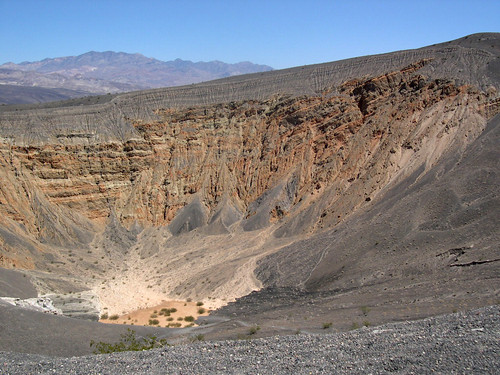
One day, I asked a lot of internet strangers and acquaintances (plus a few friends) what they would consider their favorite hike(s) in Death Valley. I was very surprised to find the Ubehebe Crater high on the list. To me it was nice but not extraordinary. Anyway, I’ll put it on this list and allow you to come to your own conclusions!
I don’t know if I loved Ibex Dunes because they’re super epic or because the lighting was fantastic the evening I visited. Either way, it’s a great place to explore if you happen to be in the far south of the valley and have high clearance. While you’re there, send your mind into tilt by visiting Saratoga Springs to find a Serengeti-worthy watering hole. And if you want sand dunes that are a bit more accessible, there’s always the Mesquite Sand Dunes near Stovepipe Wells. 3.1 miles out & back
When Should You Visit Death Valley?
I first visited Death Valley at the tender age of 11. It was May, and 102F in the shade. To say the least, we felt like we were absolutely going to fry alive, though going into the mountains, we thought we were going to freeze to death, and Telescope Peak still required crampons and an ice ax. May might not be the best time to visit, but November was much nicer in the valley, as was our April and December visits. It was 119F in the valley in June, but quite pleasant on Telescope Peak – the highest point in the park. So you might have to visit at different times of year if you truly want to hike in both extremes in elevation, but I’d personally recommend November-March as the “best” season to visit.
Remember not to enter any canyon when rain is forecasted (flash floods are real!) Holidays like Spring Break tend to be busier (read: more crowded parking areas and less options for camping).
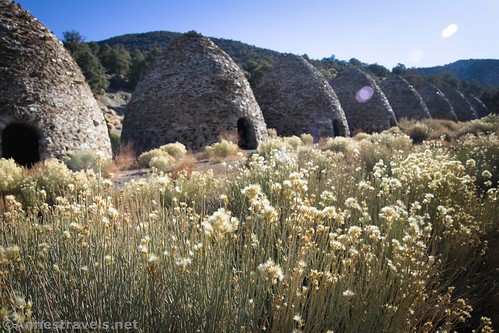
Fees/Permits for Visiting Death Valley
There is a $30 entrance fee to Death Valley National Park, valid 7 days. Death Valley Annual Passes and America the Beautiful Passes are also accepted.

Very few permits are necessary for visiting the park. Backpacking and dispersed camping does not require a permit unless you are backpacking the Cottonwood/Marble Canyons Loop or roadside camping along Echo Canyon Road, Hole in the Wall Road, Cottonwood Canyon Road, and/or Marble Canyon Road. These permits are issued on the same day as the start of the camping trip in person at the Furnace Creek Visitor Center (Backpacking Cottonwood Canyon Permits can also be obtained at the Stovepipe Wells Visitor Center or in advance online). Optionally, you can also get a free permit issued (in person at Furnace Creek) for other roads and backpacking trips in the park.
Camping & Lodging in Death Valley
I usually camp for free in Death Valley (note that some of the more popular roads now require a free permit to camp on them – the permits should be available on a first-come, first-serve basis at the Furnace Creek Visitor Center – see above.) There are also a few free and paid-for campgrounds, open seasonally. Several lodging hotels and rustic resorts are also available within the park. Las Vegas is a mere 2 hours from the east entrance to Death Valley.
Like this post? Check out Hiking Itineraries for 3 Days, 7 Days, and 10 Days in Death Valley!
This Week’s Featured Product!
Looking for more day hikes in Death Valley? Check out this guide with 20 hikes along the length and bredth of the valley. Buy it here!




